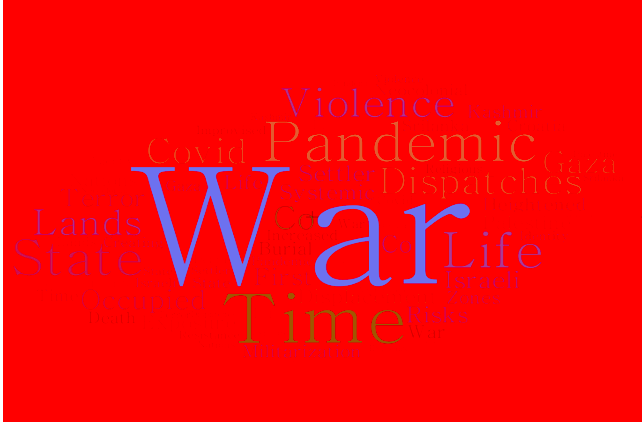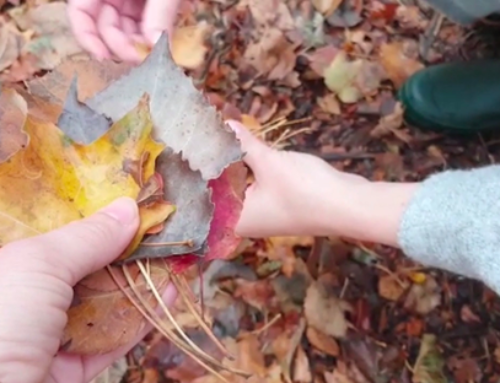
During the COVID-19 pandemic, the whole world stared disease and death in the face. Not everyone was impacted equally, however. While the virus emphasized the vulnerability of each human body, it also brought into view the constraints and limitations of our political systems and their deleterious effects on the health of our species. Indeed, the inequities between continents, countries, ethnicities, genders, classes, and castes have never been starker. The virus has been especially disastrous for people living under conditions of war and displacement. Facing intensified necropolitical policies of nation-states, which were often camouflaged as pandemic exigencies, resulted in heightened exposure to systemic violence, state terror, and militarization. The immobilization of populations did not only help contain the virus. As a mode of biopower born of neoliberal and neocolonial violence, it also facilitated death.
Infection rates in Gaza, Palestine surged due to the brutal and extensive nature of the continuing air, naval, and land blockades imposed by Israeli settler state, which impeded the movement of essential resources, such as healthcare equipment, medication, and building materials. The living situation of people worsened in Afghanistan, Yemen, Nagorno-Karabakh, Xinjiang, the Central African Republic to Colombia, South Sudan, Iraq, Libya, Kurdistan, to name a few sites. Kashmiris could not tell where the military siege that began in 2019 ended and where the COVID-19 lockdown began. US sanctions exacerbated the struggles of Iranians facing the pandemic, while refugees in camps across Syria, Sudan, Greece, and Bangladesh saw the virus spread faster than did passengers of the Diamond Princess, the cruise ship upon which transmission of the disease was four times faster than in Wuhan, China. A range of existing health and socioeconomic inequities increased risks for First Nations peoples in the US and Canada as well as Indigenous Australians. Data based on different social identities–including class, gender, age, race, and medical history–revealed that minority communities in the US were disproportionally impacted. The brutal pattern of hegemonic power weaponizing the pandemic against vulnerable populations repeated itself over and over, across continents and time zones.
While the virus intensified, humans put up a brave fight for their survival and that of their communities. People resorted to scientific knowledge and folk wisdom alike, downing medicines, concoctions, and whatever was at hand. People in zones of conflict increased resistance to safeguard life from the double pandemic—of not just the virus, but also war. It is this moment of daily resilience that the AES’s Pandemic Diaries Collections attempts to capture. People in war zones (en)countered not just pandemic time but specifically a pandemic war-time, an amalgam of state policies that were unrelenting in sustaining war and state terror, even throughout the fight against the virus.
Anthropologists and ethnographers are sensitive barometers of shifts in cultures especially during times of revival and upheavals. The dispatches in this issue include Kashmir, Palestine, Sri Lanka, and Croatia. Through ethnography rooted in careful attention and devotion to the form and practice of everyday life, these anthropologists follow how people in these regions improvised life while facing the violence of the state and of COVID.
The limitations that the pandemic lockdown placed on communities in the Western world were new and crushing. However, restricted mobility in conflict zones is far from unusual. Laura Adwan, in her dispatch from Palestine, relays how the pandemic lockdown, enforced by the Israeli settler government, only exacerbated the limitations on people’s mobility that were already in place. She also draws attention to how Palestinian activists themselves tried to protest movement to curb the spread of the virus. People began accepting the double siege of war and virus to ensure that some modicum of life could be conserved. This is reminiscent of Kashmir, where people hoped the COVID-19 lockdown might preserve lives and might even assist in slowing or halting the Indian occupation’s policies of demographic change. However, India did not stop any of its operations against Kashmiri militants. Even as the United Nations called for cessation of violence in conflict zones across the globe India and Pakistan stepped-up fighting on the Line of Control which led to several civilians being killed. It is these impacts of the pandemic war-time that this collection reflects. Khalid Wasim’s essay traces the brutal fallout of the state terror and virus, wreaking havoc on Kashmiri bodies, families, and property. Farzana Haniffa illustrates how the virus exacerbated Islamophobia in Sri Lanka, to the point that even the right to a religious burial was revoked by the authorities. Emina Bužinkić and her research partner, Aicha, traverse pandemic restrictions, tracing the exclusionary politics surrounding their identities as a Syrian (Aicha) and Croatian (Elmina) refugees. In their narrative of co-creating an agentive identity, we find a reflection about how the quest to stay human may be the only possibility for people living in the war zones. And they refuse to fail at this task. In sum, these dispatches, though a small handful, reflect humanity’s everyday triumph over the annihilating power of the pandemic war-time.
Lastly, it is important to note that the “pandemic is not over, but the end is in sight.” The impact that the pandemic has had, both positive and negative, on our global and cultural collective continues to unravel. We are simultaneously realizing our fallibility and aspects of infallibility as a species while continuing to face the invisible universe of microbes and viruses as they mutate challenging our body and body politic.
Before you in this collection are a few teachable moments of pandemic war-time. Grounded in the realities of everyday life and experience, this is the way that anthropology works best.
Ather Zia is Associate Professor of Anthropology and Gender Studies, University of Northern Colorado Greeley. She is the author of Resisting Disappearances: Military Occupation and Women’s Activism in Kashmir. is the founder-editor of Kashmir Lit; co-founder of Critical Kashmir Studies Collective and co-editor of Cultural Anthropology.
Cite As: Zia, Ather. 2023. “Introduction” In “Pandemic War-Time: Dispatches from Occupied Lands” edited by Ather Zia, American Ethnologist website, September 26 2023, [https://americanethnologist.org/news/pandemic-war-time-dispatches-from-occupied-lands-by-ather-zia/ ]




